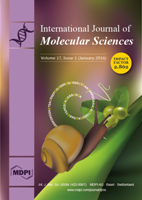Mangroves are critical marine resources for their remarkable ability to tolerate seawater. Antioxidant enzymes play an especially significant role in eliminating reactive oxygen species and conferring abiotic stress tolerance. In this study, a cytosolic copper/zinc superoxide dismutase (
SaCSD1) cDNA of
Sonneratia alba, a mangrove species with high salt tolerance, was successfully cloned and then expressed in
Escherichia coli Rosetta-gami (designated as SaCSD1).
SaCSD1 comprised a complete open reading frame (ORF) of 459 bp which encoded a protein of 152 amino acids. Its mature protein is predicted to be 15.32 kDa and the deduced isoelectric point is 5.78.
SaCSD1 has high sequence similarity (85%–90%) with the superoxide dismutase (
CSD) of some other plant species.
SaCSD1 was expressed with 30.6% yield regarding total protein content after being introduced into the pET-15b (
Sma I) vector for expression in Rosetta-gami and being induced with IPTG. After affinity chromatography on Ni-NTA, recombinant
SaCSD1 was obtained with 3.2-fold purification and a specific activity of 2200 U/mg.
SaCSD1 showed good activity as well as stability in the ranges of pH between 3 and 7 and temperature between 25 and 55 °C. The activity of recombinant
SaCSD1 was stable in 0.25 M NaCl, Dimethyl Sulphoxide (DMSO), glycerol, and chloroform, and was reduced to a great extent in β-mercaptoethanol, sodium dodecyl sulfate (SDS), H
2O
2, and phenol. Moreover, the
SaCSD1 protein was very susceptive to pepsin digestion. Real-time Quantitative Polymerase Chain Reaction (PCR) assay demonstrated that
SaCSD1 was expressed in leaf, stem, flower, and fruit organs, with the highest expression in fruits. Under 0.25 M and 0.5 M salt stress, the expression of
SaCSD1 was down-regulated in roots, but up-regulated in leaves.
Full article






